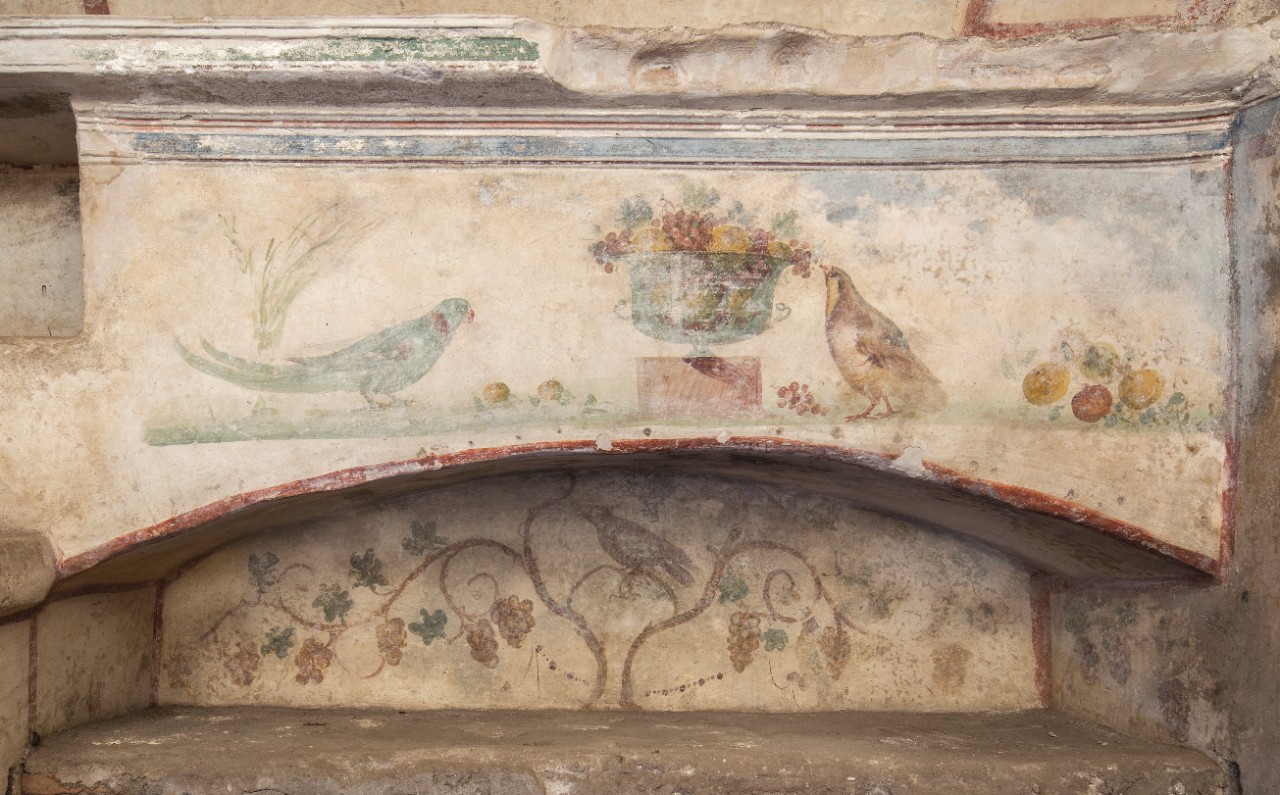Catacomb of St. Sebastian

Address
Via Appia Antica, 136 - 00179 Roma RM
Opening Time
Monday-Sunday 09:30 - 17:00 (last visit starts 16:45)
Contact
Tel: +39 06 7850350
Email: info@catacombe.org
Sito web: www.catacombe.org
Weeky Closing
Monday
Annual closing
2-22 december 2024
How to reach us
ATAC 118, 218, 660
“[...] in Rome, therefore, where he had arrived as a foreign guest, he had the domicile of perpetual immortality [...]” Martirologio Romano 20 january n°2.
Over the course of time, St. Sebastian, one of the martyrs buried here, ended up giving his name to the cemetery that was originally called ad catacumbas, that is, “near the depression”, because of the pozzolana quarries that existed at the site. The toponym “catacomb” expanded later to indicate directly the Christian underground cemeteries. The complex was also known as memoria Apostolorum because the Apostles Saints Peter and Paul were venerated there.
Starting from the first century A.D., the site was used and built up intensely. The galleries for extracting pozzolana were utilized again in order to put both pagan and Christian tombs there in the form of loculi. Several columbaria and at least two residential buildings were built (the “big villa” and the “small villa”), with notable pictorial wall decorations.
Around the middle of the second century, the area of the quarries was covered over in order to erect three mausoleums above it (of Clodius Hermes, of the Innocentiores and of the Axe) in which Christians were buried in the first half of the third century. After the area was covered over again it created the surface on which to make the “trichlia”: a pergola or trellis surrounded by a wall on which hundreds of graffiti have been deciphered with invocations to Peter and Paul who were venerated here around the year 250 since it was impossible to go to their tombs in the Vatican and on the Ostiense. On this spot, Emperor Constantine (306-337) later had a grandiose basilica built in a circular form.
In the meantime, starting from the third century, the catacomb had already developed underground which housed the tombs of the martyrs Sebastian and Eutichius. Throughout the Middle Ages, the complex continued to be lively and visited. In the seventeenth century, Cardinal Scipione Borghese had the current baroque basilica of St. Sebastian built which is located in the central nave of the Constantine building.
To know more buy The Basilica and the Catacomb of Saint Sebastian


